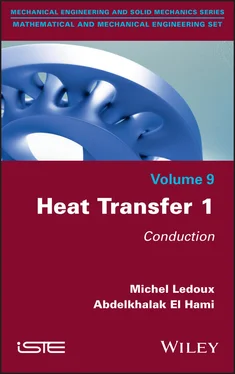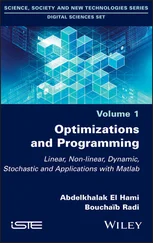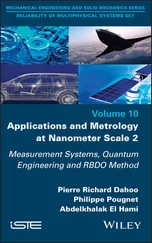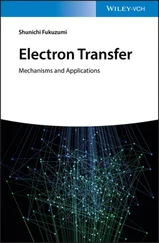[1.7] 
The minus sign indicates that one body is cooling and the other is heating.
This leads to the relationship between the quantity of heat Q given to a body and its rise in temperature Δ T (or the inverse in the case of cooling), which can be written as:
[1.8] 
1.3.2. The first principle
Later on, Joule will demonstrate the equivalence of two forms of energy: work and heat.
His experiment can be reproduced on a daily basis. It is sufficient to turn a small paint mixer in water contained in a Thermos flask. Why a Thermos? So that the heat given to the water does not escape.
We measure the electrical energy provided to an engine for a certain time, with energy measuring the work “given”to the water. The heating of the water whose mass and calorific capacity are known measures the quantity of heat broughtto the water. This quantity of heat can only come from the transformation of work provided through heat. In Joule’s era, heat was measured in calories.
One calorie raised the temperature of 1 gram of water by 1 degree Celsius. Work is evaluated in Joules. Modestly, this author only had a kilogram meter.
Hence, two conclusions will always be in the background of our study:
– qualitatively: work and heat are two equivalent and interchangeable forms of energy;
– quantitatively: the equivalence between a calorie and (today) a Joule is written as:
[1.9] 
In principle, this is part of the repertoire of all high school pupils, but it is not a bad thing to give a reminder of it.
1.3.3. The second principle
This principle is about quality and reversibility. It is easy to transform work into heat. Simple friction is sufficient. This is what Joule experienced.
It is more complicated to transform heat into work. Several sources are required, at least one hot and one cold, and the temperature of the sources becomes important. Moreover, we never recover all the heat that we provide with the hot source in work. We always “throw” some into the cold source. This will be the large Carnot work, among others.
Those who have closely read the text at the end of our preamble will understand why. The blades of the mixer transform a “directed” energy into a chaotic thermal agitation. Chaos will also never spontaneously return to order.
All this comes from the genius (we defend our choice of word) of Boltzmann, who will also be mentioned several times in the following chapters.
To conclude, let us say that in all our transfers, we are dipping into the realm of irreversibility and the permanent creation of entropy, but this will be self-evident for the reader.
Конец ознакомительного фрагмента.
Текст предоставлен ООО «ЛитРес».
Прочитайте эту книгу целиком, купив полную легальную версию на ЛитРес.
Безопасно оплатить книгу можно банковской картой Visa, MasterCard, Maestro, со счета мобильного телефона, с платежного терминала, в салоне МТС или Связной, через PayPal, WebMoney, Яндекс.Деньги, QIWI Кошелек, бонусными картами или другим удобным Вам способом.















